Coat Features and Evolution
Bengals have many specific coat features such as the Glitter and the Fuzzy, which we are going to talk about...
The Glitter
The Golden Glitter is something we particularly appreciate : it gives a sparkling, shimmering and shiny veil to the Bengal’s coat. Bengals are the only cat breed who actually have Glitter, even though not all Bengals have it. It is caused by a hollow in the Bengal’s hair, that catches the light and reflects it.

Glitter on a Brown Coat

Glitter on a Seal Coat
The Fuzzy
This is a very particular feature Bengals have, that comes from the Asian Leopard Cat. The « Fuzzy Period » is actually a camouflage phase, that every wild feline encounters. It starts at around 3 to 4 weeks, and lasts until 5 to 6 months. Its objective is to hide the kittens, to make them less contrasted, and therefore to help them blend in as much as possible, to keep them safe from predators. Their coat becomes fluffy, and it masks a bit the quality of the pattern. Step by step as the kitten grows, this weird coat will go away to reveal its real color and pattern, which will stay his whole life.

This Fuzzy stage makes it hard for our adopters to visualise how their future kitten's coat really looks like, and how well contrasted it will be etc : don't worry, we make sure to make plenty of pictures and videos of our kittens before that phase in order to have a great idea of the future coat and pattern. You can also see below on this same page, the evolution of some of our Bengals, from their first days of life, then through the Fuzzy Stage, and after that, as young adults.
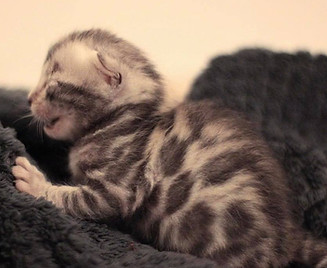
Before Fuzzy

Fuzzy

After Fuzzy
Coat Evolution
When kittens are born, their rosettes are generally closed, and monochrome. We want the spots to come out as much as possible : the more they stick out, the better the contrast will be when they become adult. As the kitten grows, his rosettes will open and let a central color appear, different from the backround and the jet-black. When the kitten reaches 3 to 4 week, he will get into the fuzzy stage which we talked about previously. After 5 to 6 months, this stage will be over and the Bengal’s contrast will be better. Bengals generally have their definitive color at 1 year old, even if we can notice some slight changes depending on the seasons.
Evolution of a Brown Bengal

3 weeks old
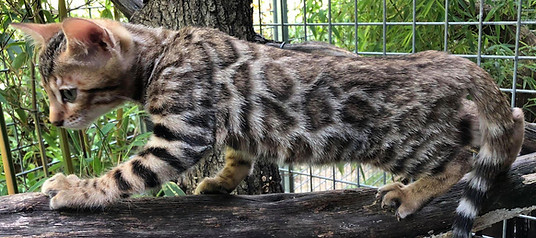
3 months old (Fuzzy)
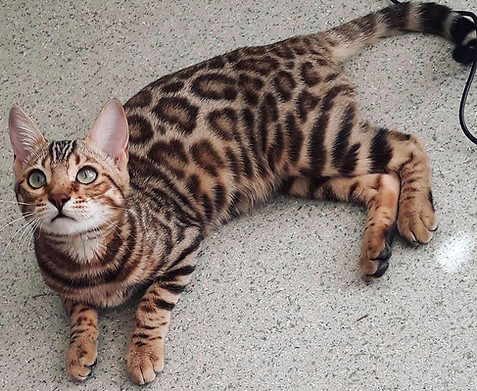
1 year old
Evolution of a Silver Bengal

2 weeks old

2 months old (Fuzzy)
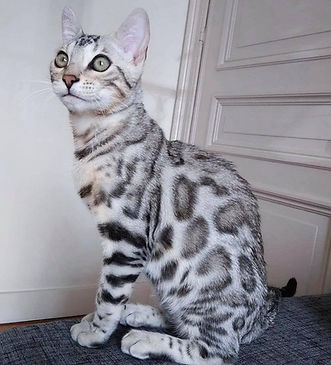
6 months old
Evolution of a Seal Mink Bengal

3 weeks old
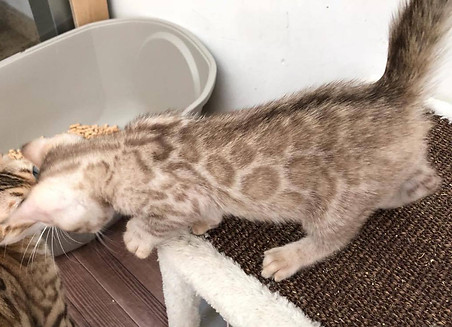
2 months old (Fuzzy)

1 year old
Evolution of a Seal Lynx Point Bengal
It is a bit different for Snow Bengals, and especially Snow Lynx Bengals : they are born totally white, and their pattern will come out little by little. They will get darker and darker until they are 1 to 2 years old, when they will reach their definitive color.

3 days old

2 months old (Fuzzy)
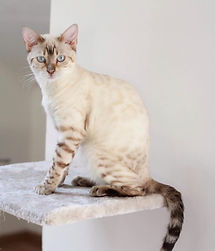
6 months old
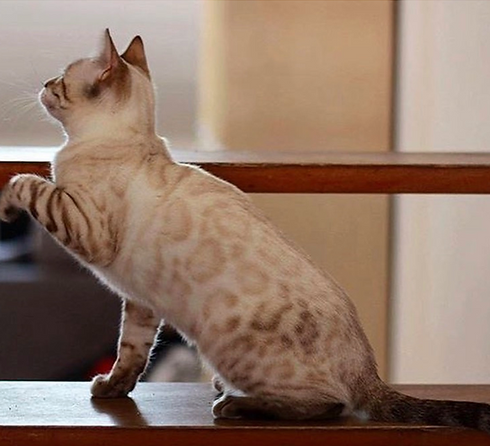
1 year old



